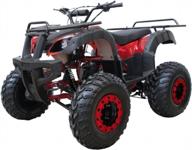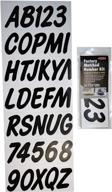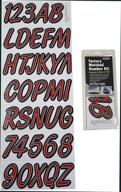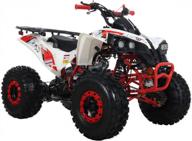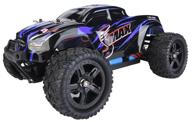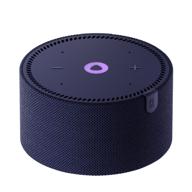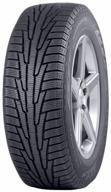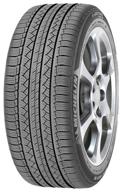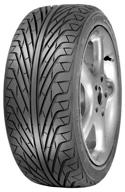Choosing the Right Motorcycle for You
With so many types of motorcycles available today, it can be overwhelming trying to figure out which one is right for your needs and riding style. Here are some key factors to consider when choosing a motorcycle:
Engine Size
Engine size, measured in CC's (cubic centimeters), is one of the biggest determiners of a motorcycle's power and performance. Some common engine sizes are:
- 250cc - 500cc: Lightweight and good for new riders. More maneuverable in city riding.
- 500cc - 850cc: A versatile middle-ground with moderate power but still easy to handle.
- 1000cc and up: Powerful engines best suited for experienced riders. Ideal for long highway trips.
Riding Style
Determine what kind of riding you plan to do most. Important factors are:
- Cruising: Long distances at moderate speeds, like highway road trips.
- Commuting: Navigating through cities and heavy traffic.
- Off-road: Riding on dirt, gravel, and uneven terrain.
- Touring: Carrying luggage for multi-day trips.
- Sport: Emphasis on speed, acceleration, and aggressive handling.
Motorcycle Types
Each motorcycle type is designed with certain riding styles in mind:
| Type | Best Suited For |
|---|---|
| Cruiser | Cruising, leisurely riding |
| Standard/Naked | All-around riding, commuting |
| Sport/Sport Touring | Sporty riding, long distances |
| Dual-Sport | Off-road and street mix |
| Scooter/Moped | Urban commuting |
| Touring | Long hauls with luggage |
Additional Considerations
- Comfort - Consider ergonomics and seat padding.
- Technology - Look for electronics and features that match your preferences.
- Safety - Prioritize good brakes, suspension, traction control.
- Costs - Factor in insurance, maintenance, accessories.
- Resale value - Some brands and models hold value better.
By carefully weighing your intended riding purpose, experience level, and preferences, you can zero in on the ideal motorcycle to get you on the road and enjoying the ride.
Must-Have Motorcycle Gear for Safety and Comfort
When riding a motorcycle, having the proper protective gear can make all the difference between a fun ride and a dangerous accident. Here are some essential items every rider should use:
Top products in 🛵 Vehicles
Helmet
A helmet is the single most important piece of gear and is required by law in most places. Be sure to get one with these features:
- DOT or Snell safety rating
- Full face coverage
- Visor with UV protection
- Ventilation system
- Comfortable, snug fit
Jacket & Pants
Look for motorcycle jackets and pants made of abrasion-resistant materials such as:
- Leather
- Kevlar
- Cordura
For warm weather, perforated leather or textile jackets allow airflow. Armored panels provide impact protection for joints.
Similar products
Gloves
Full-fingered gloves safeguard your hands and improve your grip. Leather is best, with carbon fiber knuckles for protection.
Boots
Motorcycle boots should have:
- Sturdy slip-resistant soles
- Ankle protection
- Shin guards
- Reinforced toes
Rain Gear
When riding in rain, a waterproof jacket, pants, and gloves will keep you dry. Consider high visibility colors to be more noticeable.
Base Layers
Synthetic moisture-wicking base layers help regulate body temperature in any weather. They prevent chafing from leather suits as well.
Other Essentials
- Riding glasses to block debris, sun, wind
- Sturdy riding boots
- Ear plugs to prevent hearing damage
- First aid kit
- Toolkit for roadside repairs
With the proper riding gear, you can hit the open road feeling protected and comfortable mile after mile.
Another interesting products
Getting the Most Out of Your Motorcycle
Owning a motorcycle opens up a world of excitement and freedom. Here are some tips to help you get the most enjoyment and utility out of your bike:
Learn Proper Riding Techniques
Developing good riding skills will make you smoother, safer, and more confident on your motorcycle. Areas to focus on include:
- Balance at low speeds
- Smooth throttle, clutch, and brake control
- Cornering lines and body positioning
- Emergency braking
- Swerving safely
Take advanced riding courses to hone your technique over time.
Customize Your Fit
Make adjustments so your motorcycle fits you like a glove:
- Set rearsets and handlebars to ideal riding position
- Get properly shaped seat for comfort
- Adjust suspension height and tuning
Being comfortable and having controls within easy reach allows you to ride better.
Upgrade Components
As desired, replace original parts with higher performing aftermarket components:
- Improved brake pads and rotors
- Grippier tires
- Smooth-shifting clutch kit
- More responsive suspension
- Lightweight wheels
Maintain Diligently
Follow the maintenance schedule in your bike's manual. Change fluids and filters regularly, check tire pressures, lube the chain, fix problems promptly. Don't neglect minor issues which can lead to major repairs down the road.
Ride Regularly
Motorcycles need to be exercised! Make a point to ride often, keep your skills sharp and the bike's components lubricated. The more miles you ride, the more comfortable and in tune with your machine you'll become.
Treat your motorcycle well and it will deliver miles of smiles for years to come. Stay safe out there!
Winterizing Your Motorcycle
Preparing your motorcycle for storage during winter months is crucial to keeping it in top condition. Here are some tips for proper winterization:
Change Fluids
Replace all fluids before storage, including:
- Engine oil and filter
- Front fork oil
- Brake fluid (every 2 years or as needed)
- Coolant (every 2-5 years)
This prevents contaminated or corroded fluids from damaging components over the winter.
Fuel System
To avoid gummed up fuel lines and carburetors:
- Fill tank with fresh fuel stabilized with additive
- Run engine to circulate stabilized fuel through system
- Drain carburetors and fuel injected bikes as per manual
Battery
- Fully charge battery and store on trickle charger
- OR remove battery and store in cool, dry place
- Clean terminals and coat with dielectric grease
Protect Surfaces
Prevent corrosion by:
- Coating chrome and unpainted metal with wax
- Treating leather seats with conditioner
- Lubing cables and pivot points
Tires
- Inflate to recommended pressure
- Place on stands to avoid flat spots
- Consider tire covers to block UV rays
Storage
Ideal conditions:
- Inside a garage or shed
- Covered with a motorcycle cover
- Battery tender attached
- Placed on rear stand or blocks to raise wheels
Avoid drafty, sunlit, or damp areas which can promote deterioration.
With proper preparation, your bike will be ready to roll when sunny skies return.
Common Motorcycle Repairs You Can Do Yourself
With some mechanical aptitude and the right tools, you can perform many motorcycle repairs at home to save money versus taking it to the shop. Here are some common fixes every rider should know how to do:
Change Oil and Filter
New oil and filter keeps the engine running smooth. Be sure to:
- Use manufacturer recommended oil weight and filter
- Torque drain plug and filter to spec
- Dispose of old oil properly
Lube and Adjust Chain
A clean, lubricated chain prevents wear and keeps power flowing to the rear wheel. Steps include:
- Clean chain with degreaser
- Apply chain lube suitable for O or X rings
- Check/adjust chain slack per manual
- Align rear wheel
Replace Brake Pads
Worn out pads reduce braking power. Swap pads when at minimum thickness:
- Support caliper before changing pads
- Replace inner and outer pads as a set
- Use pads meeting OEM specifications
Change Spark Plugs
New plugs restore performance and fuel economy. Remember to:
- Gap plugs properly
- Use recommended heat range
- Tighten to torque spec
Adjust Clutch and Throttle Cables
Cables stretch over time, leading to poor lever and throttle response. Eliminate slack by:
- Checking cable routing is not binding
- Using barrel adjuster to take out slack
- Replacing damaged cables
With basic tools and some mechanical know-how, you can keep your motorcycle running smoothly between professional servicing.
Hitting the Open Road: Planning Your First Big Motorcycle Trip
Taking an extended ride on your motorcycle can be an incredibly rewarding experience. Proper planning is key to a successful trip. Here are some tips for your first big adventure on two wheels:
Choose Your Route
Decide on a general route based on:
- Places you want to see
- Types of roads to ride (highways, backroads, etc)
- Total mileage and days
Traveling a big loop is ideal so you cover new ground both ways. Leave room for detours and discovery along the route.
Schedule Stops
Plan daily segments of 150-300 miles with rest stops every 1-2 hours. Locate lodging and points of interest in advance. Allow for extra days to accommodate sightseeing and the inevitable delays.
Packing & Luggage
Pack as lightly as possible while still bringing necessities:
- Spare key
- First aid kit
- Tire repair kit
- Motorcycle-rated luggage
- Rain gear
- Layers for variable weather
- Toolkit for minor roadside repairs
Bike Preparation
- Tune up engine, inspect brakes, chain, tires
- Change oil, check all fluids
- Lubricate cables, pivots, levers
- Test run all lighting and electrics
Documentation
Carry all necessary paperwork:
- License, registration, insurance
- Maps/directions
- Hotel/camping reservations
- Emergency contacts
With thoughtful preparation, you can embark on an epic motorcycle journey that will create lasting memories.
Personalizing Your Ride: Customizing Your Motorcycle to Suit Your Style
One of the joys of owning a motorcycle is making it your own with custom touches that reflect your personality. There are many ways to personalize your bike:
Cosmetic Changes
Visually transform the look with:
- Custom paint job with colors and designs
- Decals and pinstriping
- New headlight, taillight, turn signals
- Tinted windshield
- Custom license plate holder
Seating
Options to consider for comfort include:
- Aftermarket saddle with enhanced padding
- Seat with lower/higher profile
- Custom seat upholstery
- Backrest and luggage rack
Handlebars
Choose handlebars to customize fit and stance:
- Clubman, drag, or tracker bars
- Beach style bars for a laid back position
- Raised bars for upright touring
Foot Controls
Relocate foot pegs and controls with:
- Rearset kits
- Forward control kits
- Folding or retractable pegs
Functional Upgrades
Boost performance and capability with:
- Aftermarket exhaust system
- Engine tuning module
- Suspension lowering/raising kit
- Luggage and storage options
The possibilities are endless for making your motorcycle distinctly yours.
What is the Benefit of Amazon Prime for Buying Vehicles?
Amazon Prime provides a number of advantages when purchasing automotive parts, accessories, and maintenance supplies online. Here are some of the key benefits Prime members enjoy:
Free Two-Day Shipping
On countless vehicle products, Amazon Prime members get access to free two-day shipping. This provides faster delivery times than standard shipping that could take 5-7 business days or more. Quick shipping means you can order a replacement part and be back on the road faster.
Free One-Day Shipping
Select areas in the U.S. qualify for Prime one-day shipping on over 3 million items. For time sensitive repairs or urgent needs, you can get your order overnight.
Free Same-Day Delivery
In eligible zip codes, you can get many products delivered the same day you order them through the Prime Now program. This is ideal when you need something ASAP to use your vehicle.
Prime Vehicle Discounts
Amazon Prime members get exclusive discounts on certain automotive accessories, performance parts, OBDII scanners, code readers, diagnostic tools and more. Savings range from 10-15% off regular prices.
Prime Early Access Deals
During sales events like Prime Day, Prime members get 30-minute early access to limited time Lightning Deals on vehicle products. This lets you snap up discounted items before they sell out.
Overall, an Amazon Prime membership provides significant shipping and shopping benefits for automotive enthusiasts. The ability to get parts and accessories faster, save money on discounts, and access deals early makes Prime worthwhile for regular purchases.
All Transactions Run Through FCIC Are Maintained In A Searchable Database For Five Years
According to the search results, all transactions run through FCIC (Florida Crime Information Center) are maintained in a searchable database for five years. This database includes Criminal History Record Information (CHRI), Hot Files (which includes Persons, Status, and Property records), and queries of Concealed Weapon Permits issued by the Department of Agriculture and Consumer Services. The FCIC is the primary system used to access Florida records, and it supports queries of records provided by the Florida Department and Highway Safety and Motor Vehicles through an FCIC query. The FCIC is also used to access national criminal justice resources, including the National Crime Information Center (NCIC) and the International Justice and Public Safety Network (Nlets) . The NCIC is a computerized index of criminal justice information, including criminal record history information, fugitives, stolen properties, and missing persons. The purpose of maintaining the NCIC system is to provide a computerized database for ready access by a criminal justice agency making an inquiry and for prompt disclosure of information in the system from other criminal justice agencies about crimes and criminals. The FCIC and NCIC databases are used by law enforcement agencies to access information about individuals and vehicles involved in crimes, and the databases are updated regularly.







